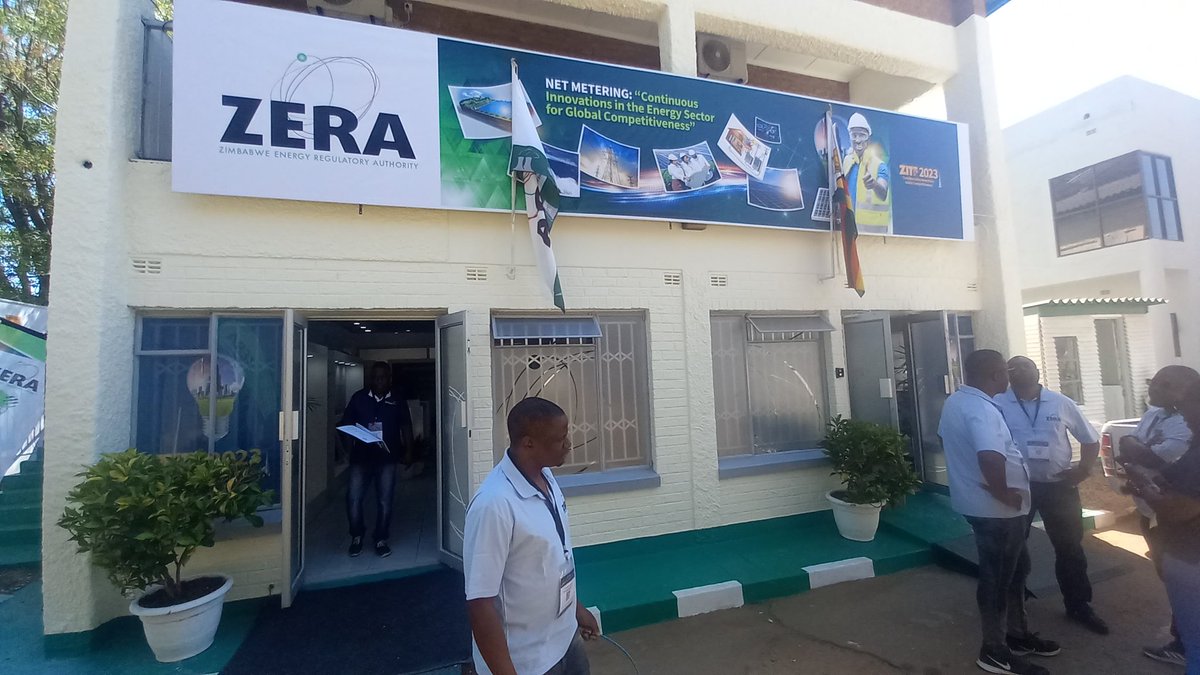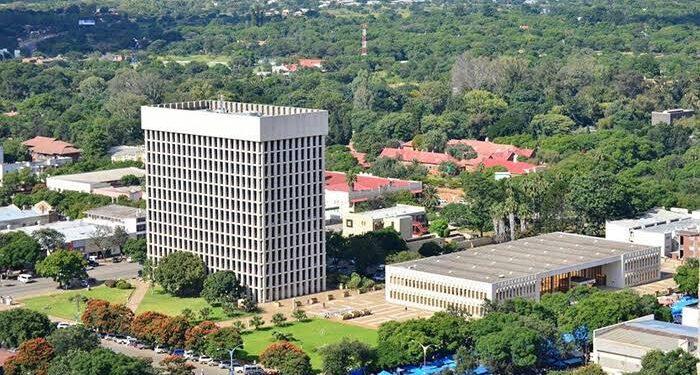Address at the ZNCC Annual Congress by Prof. Arthur G.O. Mutambara, Deputy Prime Minister of Zimbabwe on 13th June 2013, Victoria Falls, Zimbabwe.Introduction
Most of our development and industrialization plans have assumed the traditional strengths of our country; natural resources, vast arable land, depth and breadth of our industries, our people, geographical location and stability. While these remain key factors in assessing our national economic value proposition, there is need for rethinking and redefining our competitiveness. Technological advances, the emerging role of talent, and the imperatives of globalization demand a reassessment. There is also need to identify infrastructure, an industrial cluster strategy and beneficiation as the key potential drivers of Zimbabwe's competitiveness. Furthermore, contextual and operational competitiveness will come from effective implementation, monitoring and evaluation, with emphasis on tracking the right metrics. Of course, all this should be rooted in the provision of certainty, predictability, and an enabling economic environment by state actors.
Background and Definitions
Competitiveness refers to the ability of a firm or a nation to offer products and services that meet the quality standards of the local and world markets at prices that are lower than those of rival entities and provide adequate returns on the resources employed or consumed in producing them. Competitiveness is about the ability and performance of a firm, sub-sector or country to sell and supply goods and services in a given market, in relation to the ability and performance of other firms, sub-sectors or countries in the same market. Within market driven economic systems, the drive of enterprises is to maintain and improve their own competitiveness.
National competitiveness is defined by the productivity with which a nation utilizes its human, capital, technology and natural resources. To understand competitiveness, the starting point must be a nation's underlying sources of prosperity. A country's standard of living is determined by the productivity of its economy, which is measured by the value of goods and services produced per unit of its resources. Productivity depends both on the value of a nation's products and services – measured by the prices they can command in open markets – and by the efficiency with which they can be produced. Productivity is also dependent on the ability of an economy to mobilize its available assets including natural resources, human capital, technology and institutional capacity. We have to conduct an asset audit for Zimbabwe as we seek to assess and redefine its competitiveness.
A nation's prosperity depends on its competitiveness. Sound macroeconomic policies and stable political and legal institutions are necessary but not sufficient conditions to ensure a prosperous economy. Competitiveness is rooted in a nation's microeconomic fundamentals—the sophistication of company operations and strategies and the quality of the microeconomic business environment in which companies compete. An understanding of the microeconomic foundations of competitiveness is fundamental to national economic policy and strategy. There are three broad and interrelated drivers of foundational competitiveness; i.e., infrastructure and political institutions, monetary and fiscal policy, and the microeconomic environment. A competitive nation is able to attract investment, trade and tourism, thus spurring national development and economic growth. The key parameters to be managed include Economic Performance, Government Efficiency, Business Efficiency, Infrastructure, Innovation and Entrepreneurship, and Quality of Life. Where is the Zimbabwean nation in this framework?
Competitive and Comparative Advantage
Another concept we must define is competitive advantage. It is the edge that a firm has over its competitors, allowing it to generate greater sales or margins and retain more customers than its competition. There can be many types of competitive advantages including the firm's cost structure, product offerings, distribution network and customer support. Competitive advantages give a company an edge over its rivals and an ability to generate greater value for the firm and its shareholders. The more sustainable the competitive advantage, the more difficult it is for competitors to neutralize the advantage.
There are two main types of competitive advantages: comparative advantage and differential advantage. Comparative advantage, or cost advantage, is a firm's ability to produce a good or service at a lower cost than its competitors, which gives the firm the ability sell its goods or services at a lower price than its competition or to generate a larger margin on sales. A differential advantage is created when a firm's products or services differ from its competitors and are seen as better than a competitor's products by customers. Competitive advantage seeks to address some of the criticisms of comparative advantage. Competitive advantage theory suggests that states and businesses should pursue policies that create high-quality goods to sell at high prices in the market. We should emphasize productivity growth as the focus of national strategies. This is the route that Zimbabwe should take. Competitive advantage rests on the notion that cheap labor is ubiquitous and natural resources are not necessary for a good economy. The other theory, comparative advantage, can lead countries to specialize in exporting primary goods and raw materials that trap countries in low-wage economies due to terms of trade. Competitive advantage attempts to correct for this issue by stressing maximizing scale economies in goods and services that garner premium prices.
Competitive advantage occurs when an organization acquires or develops an attribute or combination of attributes that allows it to outperform its competitors. These attributes can include access to natural resources, such as high grade ores or inexpensive power, or access to highly trained and skilled personnel human resources. New technologies such as robotics and information technology can provide competitive advantage, whether as a part of the product itself, as an advantage to the making of the product, or as a competitive aid in the business process, for example, better identification and understanding of customers.
In economics, comparative advantage refers to the ability of a party to produce a particular good or service at a lower marginal and opportunity cost over another. The essence of comparative advantage is rooted in low opportunity cost due to location of raw materials, labour, technology, capital or markets. Even if one country is more efficient in the production of all goods, i.e., absolute advantage in all goods; than the other, both countries will still gain by trading with each other. Comparative advantage is the edge that an entity has on producing and selling a product over other centers. Zimbabwean companies and our industrialization planners must take into account both comparative and competitive advantages. As already explained, comparative advantage is predicated upon having the lowest opportunity cost through proximity of assets such as raw materials, labour and markets. What Zimbabwean sectors fall in this category? On the other hand, competitive advantage is gained by offering greater value by means of lower prices or by providing greater benefits through economies of agglomeration and association. Where does this place our manufacturing sector?
WEF Global Competitiveness Index
In recent years, the concept of national competitiveness has emerged as a new paradigm in economic development. Competitiveness captures the awareness of both the limitations and challenges posed by global competition, at a time when effective government action is constrained by budgetary constraints and the private sector faces significant barriers to competing in domestic and international markets. There are several indices that seek to measure the attractiveness and competitiveness of nations. These include; The World Economic Forum (WEF) Global Competitiveness Index (GCI), World Bank Ease of Doing Business Index, Economic Freedom Index, Human Development Index, and the Mo Ibrahim African Governance Index.
The WEF Global competitiveness report defines competitiveness as the set of institutions, policies, and factors that determine the level of productivity of a country. The index is an important determinant for the well-being of states in an international trade environment. The term is also used to refer in a broader sense to the economic competitiveness of countries, regions or cities. Recently, countries are increasingly looking at their competitiveness on global markets. The WEF GCI framework ranks the world's nations and it is based on the latest theoretical and empirical research. It is made up of over 110 variables, organized into twelve pillars, with each pillar representing an area considered as an important determinant of competitiveness. These twelve pillars are organized into three categories; Basic Requirements, Efficiency Enhancers, and Innovation and Sophistication. As a nation develops, wages tend to increase, and that in order to sustain this higher income, labor productivity must improve for the nation to be competitive. In addition, what creates productivity in Sweden is necessarily different from what drives it in Ghana. Thus, the GCI separates countries into three specific stages: factor-driven, efficiency-driven, and innovation-driven, each implying a growing degree of complexity in the operation of the economy.
In the factor-driven stage countries compete based on their factor endowments, primarily unskilled labor and natural resources. Companies compete on the basis of prices and sell basic products or commodities, with their low productivity reflected in low wages. To maintain competitiveness at this stage of development, competitiveness hinges mainly on well-functioning public and private institutions (pillar 1), appropriate infrastructure (pillar 2), a stable macroeconomic framework (pillar 3), and good health and primary education (pillar 4). This is where Zimbabwe is, i.e., a basic factor driven economy. The same applies to Angola, Mozambique and DRC.
As wages rise with advancing development, countries move into the efficiency-driven stage of development, when they must begin to develop more efficient production processes and increase product quality. At this point, competitiveness becomes increasingly driven by higher education and training (pillar 5), efficient goods markets (pillar 6), efficient labor markets (pillar 7), developed financial markets (pillar 8), the ability to harness the benefits of existing technologies (pillar 9), and its market size, both domestic and international (pillar 10). In this stage of development, examples of efficiency driven countries include Malaysia, Singapore, and Hong Kong.
Finally, as countries move into the innovation-driven stage, they are only able to sustain higher wages and a higher standard of living if their businesses are able to compete by providing new or unique products. At this stage, companies must compete by producing new and different goods using the most sophisticated production processes (pillar 11) and through innovation (pillar 12). In this most advanced stage of competitiveness, examples of innovation driven economies include Japan, USA, and Switzerland. Some countries are in between the three stages, i.e., moving from factor to efficiency driven or moving from efficiency to innovation driven. The impact of each pillar on competitiveness varies across countries, as a function of their stages of economic development. Therefore, in the calculation of the GCI, pillars are given different weights depending on the per capita income of the nation. The weights used are the values that best explain growth in recent years.
True competitiveness, is measured by productivity and productivity growth. We must establish levels of these two variables in the Zimbabwean economy. Productivity allows a nation to support high wages, attractive returns to capital, a strong currency – and with them, a high standard of living. What matters the most is not exports per se or whether firms are domestic or foreign-owned, but the nature and productivity of the business activities taking place in a particular country. Purely local industries also count for competitiveness, because their productivity not only sets their wages but also has a major influence on the cost of doing business and the cost of living in the country.
So what are the drivers for competitiveness in emerging economy such as ours? Almost everything matters for competitiveness. The schools matter, the roads matter, the financial markets matter and customer sophistication matters. These and other aspects of a nation's circumstances are deeply rooted in a nation's institutions, people and culture. This makes improving competitiveness a special challenge, because there is no single policy or grand step that can create competitiveness, only many improvements in individual areas that inevitably take time to accomplish. Improving competitiveness is a marathon, not a sprint. How to sustain momentum in improving competitiveness over time is among the greatest challenges facing countries.
The Role of Technology in Competitiveness
Advances in technology such as ICTs, biotechnology, social media, nanotechnology, robotics and mechatronics mean that Zimbabwe's competitive advantage must be reassessed. Disruptive technologies and discontinuities have changed the industrial landscape. The notion of creative destruction has become a commercial norm. By creative destruction we mean a company must not be attached to products as if they were children. One must be able to abandon current products and embrace completely novel once, and move with technological innovation, in particular that which is driven by disruptive technologies. Giant leaps in science, technology, and technology-driven innovation have become key determinants of industrial development and economic growth. In fact, the traditional understanding of capitalism as dealing with the ownership of the means of production, with these being land, labour and capital; is no longer exhaustive nor accurate. Technology in general and ICTs in particular are now an integral part of the means of production. Ownership and deployment of these technologies are now decisive factors. The ICT driven knowledge economy, means Zimbabwean companies must be involved in the creation, leveraging and commercialization of knowledge. By knowledge economy we must also include indigenous knowledge systems. These must be leveraged as part of our competitive strength. Technological innovation and creativity are critical. Collaborative and co-creative open source technology development efforts are now the order of the day. In particular activities such hackathon where computer programmers and others involved in software development, including graphic designers, interface designers and project managers, dynamically collaborate intensively on software projects; are on the rise. A hackathon led to the development of twitter.
Enhancing competitiveness requires a national technology policy targeting specific industries for special treatment. In the USA, certain technologies, such as high-definition television, supercomputers, and semiconductors, got special attention from the federal government. In fact most of these technologies involving electronics or computing define the USA's competitive strength. These hi-tech industries could not be developed without a skilled professional labor force, substantial research and development, and advanced manufacturing technologies. And it was in these areas that the US assumed it had its greatest advantages because of its existing educational and research infrastructure and its general availability of venture capital. For us the question is then, what is Zimbabwe's national technology policy, and how is it linked to our competitiveness.
Historically, technology has always been critical in economic development. By the end of the nineteenth century, companies at the cutting edge of technology were competing fiercely in international markets for business viability. The contested technologies were different then: fine chemicals, metallurgy, business machines, automobiles, electrical power and appliances, and telecommunications. But research and development, venture capital, university-industry relations, patents, and many other factors were at that time similar to what they are today in technologically competitive industries. Thus there is a century of experience with technological competitiveness among firms and among nations from which lessons can be drawn.
In fact most innovation is technology driven. In fact the word “innovation" evokes images of inventors, new technologies and new products. Iconic images come to mind – the Model T, airplanes, computers, rockets, radios, TVs, cell phones and more. The list is endless, and the impact of these devices on the development of the modern world has been tremendous. Society would not be what it is today without the progressive development of science and technology. Technology-driven innovation usually originates in scientific discoveries and in hundreds of years of accumulated technical know-how. These combined forces of science and technology drive ever greater specialization in the spheres of knowledge. When new technologies make the transition from the scientific domain to realization in technology, inventors and corporate R&D groups, companies compete to develop commercial applications. As we redefine Zimbabwe's competitiveness we must learn from, and leverage this framework. In the early decades of industrialization the development of new technology was itself often a key source of competitive advantage. Consequently, companies invested heavily in R&D projects that produced new products in every sector of the economy.
For companies and countries that do not compete in the high tech sector, the development and deployment of technology is also a critical success factor, but here the role of technology is largely in operations, because technology is critical to every aspect of coordination, communications and management in today's markets. For these companies and countries, technology is completely embedded in how people work and improvements in technology applications can be a significant source of differentiation. This is the approach that Zimbabwe should take to Technology.
Our definition of national competitiveness must embrace advanced science and technology including nanotechnology, biotechnology, neuroscience, ICTs, cloud computing, big data, social media, crowd sourcing, robotics, and mechatronics. We should neither fear nor fight technology. Let us use technology and science to address our socio-political-economic challenges. The conventional wisdom that says the most advanced technology and science is for the developed world and that emerging economies must settle for older technologies is not valid. In fact sometimes the most advanced technologies are more relevant, easier to apply, and more profitable to deploy in developing countries than in the rich nations. This is because in the emerging economies, there are no infrastructure sunk costs and legacy constraints. There is an opportunity to leapfrog. The experiences and illustrative case studies of mobile telephony and mobile financial services are clear manifestation and demonstration of this new phenomenon. It is cheaper, easier, and more appropriate to deploy new innovations such as Wi-Fi, WiMAX and cloud computing in an environment where there is nonexistent telecommunications infrastructure (extensive wiring, hardware and storage). Big Data's capacity to manage and analyze large amounts of information can be leveraged to handle geological and exploration data as Zimbabweans set out to quantify and attach financial value to all their un-mined natural resources.
In a McKinsey report of 2010, the following was posited; $2.6 trillion – Africa's collective GDP in 2020 (of which $1.3 trillion is from consumer facing industries), $1.4 trillion – Africa's consumer spending in 2020; 1.1 billion – the number of Africans of working age in 2040, 128 million – the number of African households with discretionary income in 2020; 50% – the portion of Africans living in cities by 2030. The summary impact from this research is that Africa's competitiveness is more than a resource driven. The key growth driver, about 50% of GDP, is now coming from consumer facing industries (retail, ICT, banking, services). This competitiveness analysis can be extrapolated to Zimbabwe. An enabling environment for consumer facing industries should be part of our industrial strength.
The Role of Talent in Competitiveness
In the ICT driven global economy, human capital and talent in particular, are now more important than they were in the last 30 years. With talented individuals such as Bill Gates, Steve Jobs, and Mark Zuckerberg creating multi-billion dollar companies, creating financial resources larger than GDPs of countries, from just an idea; the formulation and naming of the economic system itself has come into question. If the means of production were land, labour and capital, why was the system called capitalism? Back then capital was more important than talent. That is why. Not now. Talent now trumps cash. We are now in the era of Talentism, not Capitalism. This has serious implication for competitiveness. In fact the original meaning of capital had nothing to do with cash. It was about human capacity as derived from the words capitos or capitalis.
When we say human capital we are signaling a departure from the notion of an employee as a warm body, but rather as the capability to do work. This is the basis for the migration from Human Resource Management to Human Capital Management. There is now emphasis on impact of human capacity, the financial (economic) value of an employee, and the economic return on human input. It must be understood that expenditures such as education, training, and medical care are investments which produce human capital, not physical assets or financial capital. You cannot separate a person from his or her knowledge, skills, health, or values. Human capital is thus defined as the combination of skills, competencies, motivation, capabilities, interactions, energy, experiences, and institutional memory that create value for the organization. This is the new definition of an “employee." An employee must demonstrate capability and capacity to do specific tasks. Hired individuals must be able to satisfy identified skills and work needs. Human Capital Management is then defined as the unleashed, enhanced, and sustainable human capital that produces measurable results and impact in the organization.
This is the essence of the paradigm shift from a human resource department to a human capital department. The latter can also be called a human enablement department. Skills gap analysis, pipelining, and recruitment in both the Zimbabwean public and private sectors must be carried out within this new human capital context. In the new knowledge and ICT driven global economy, firms will not ‘manage the careers' of their employees. They will provide opportunities to enable the employee to develop identity and adaptability and thus be in charge of his or her own career. This is the only viable modus operandi in this new brave world characterized by a war for talent. The human capital department has to be a people department, a center for talent excellence, consisting of seriously cool people who recruit develop, and retain seriously cool people. In addition, the traditional human resource practices of lumping employees together do not work. Employees are all unique. One size NEVER fits all. One size fits one. Period. The human capital department should have the best talent, the best information technology resources, and it should be a valued expert resource to the firm when it comes to strategy, change management, organization design, and talent management. Our people remain one of our key strengths, but they have to be leveraged differently.
We are moving away from the concept of life-time employment contracts to the notion of employability. Given continuity of change in the economy, such as rapid changes in technology, there is continuous erosion and decay of skills and jobs. Consequently, skills are being rendered irrelevant and certain jobs are “dying." If, for example, you were a skilled expert in producing typewriters and that's all you were capable of doing, you will be unemployable today. Competencies are becoming obsolete. This means there is need for re-skilling, retooling, ICT literacy, and continuous education. The question is whether you are employable today, not yesterday. This means there is need for creative destruction in skills and competences, that is, be able to abandon your current skills and develop new ones, as you embrace disruptive technologies. There is now a strong case for temporary jobs or contracts as opposed to long term jobs. Those 25 and 30 year awards for long term services are no longer meaningful, neither should they be encouraged. Demonstration of capacity to do the work is now more important the qualifications on a piece of paper. Furthermore, we must embrace entrepreneurial employees. Also rather than just hire on the basis of qualifications and past experience, firms must pursue employment for potential, but quickly converting the potential into impact.
In development of the human capital function, analysis of the following is now critical; skills requirements, skills planning, skills audit, and skills gap analysis. Skills gap closing is then by learning and resourcing. Surveys of executives confirm that many believe that finding and developing the right people define their competitive edge. However, it is one thing to stress the importance of human capital, and quite another for organizations to be designed to reflect the importance of human capital. Zimbabwean corporations must be reconfigured to put talent at the center. In particular, human capital should have a major impact on organizational design, corporate boards, leadership, and information practices. Corporate boards should have both the expertise and the information needed in order to understand and advise on talent issues at all levels of the organization. They should focus on developing managers who can provide leadership.
In reviewing competitiveness with respect to the new thinking in human capital development, we must also address the role of diversity management. The different types of diversity within the workforce include gender, race, age, culture, language, disability, HIV/AIDS, skills, expertise, worldview, religion, nationality, employment band, and geography (urban/rural, province). Diversity properly managed and leveraged can lead to productivity growth. The problem is that there has been a wrong approach to diversity where it is viewed as; a compliance issue, doing the right thing, morality issue, righting the wrongs of the past, and the cost of doing business. In fact diversity has not been considered part of core business. This perception of diversity is clearly not sound. In fact, it cannot be further from the truth.
The correct perspective is to view diversity as a source of enhancing profitability, business sustainability, and creativity. But this is only achievable if we leverage and deploy smart and purposeful diversity not just diversity for the sake of diversity. In proper diversity adoption and management we can embrace workforce and market complexity and unlock it. We also enhanced customer focus and develop a better understanding customer needs. We gain a broader worldview, leading to better insights, by accommodating the majority, and this entails greater market access. Consequently, the benefits of diversity can be summarized as including; customer centricity, anticipating and responding to customer needs, sustained supplier relationships, focus on employees, thriving under globalization, good corporate citizenship, reduced diversity related legal costs, and triple bottom line benefit, and great impact on society and communities. In particular, Zimbabwe's competitiveness will be immensely enhanced if we embrace the empowerment of women. Gender diversity makes business sense. There is an economic value proposition for it, characterized by an increased GDP, better per capita income, improved productivity growth, increased profitability and better performance. Womenomics – the economy as enabled, driven and experienced by women- has to be part of rethinking and reassessment of competitiveness.
In discussing human capital, we must also deal with the matter of incentives, employee motivation and worker value proposition. We must design creative incentive altering structures, and address the tensions between performance based institutions and learning organizations. Motivation of employees must go beyond Maslow's hierarchy of needs. The employee, manager or leader must be given an opportunity to self-transcend, go beyond self and leave a legacy.
The Impact of Globalization on Competitiveness
Globalization has made regional and continental integration a survival issue. This is because under globalization the key drivers are regional attractiveness, regional competitiveness, continental attractiveness, and continental competitiveness. Regional and continental frameworks are the only game in town. National economic plans, budgets, visions, strategies and programs must be aligned between the African countries and fashioned into regional ones and ultimately into continental frameworks and initiatives. For example we need SADC and COMESA economic visions and strategies. Under globalization, the nation state is no longer a viable unit of analysis, neither is it the best platform for survival or socio-politico-economic prosperity.
Regional and continental blocs such as EAC, COMESA, SADC, Magreb, ECOWAS, AU, EU, ASIANA, and NAFTA are better frameworks from which to engage globalization. Scale, market size, pooling of resources together and regional consensus improve bargaining power immensely. We need regional strategies and policies to effectively respond to global trends and investments. Regional and continental integration is equally important for companies and corporations. They will not survive as national entities. You must have a regional, continental or global footprint. Zimbabwean success stories which have embraced and demonstrated this new paradigm include Econet, Africa Sun, BancABC and Afrasia Kingdom.
However, globalization must be combined with both local insights and wisdom. This gives us the new term glocalization, where a global footprint is buttressed by intimate knowledge of the local conditions, requirements and needs, while leveraging local human capital. Embracing glocalization will define the competitiveness of Zimbabwean companies. For the individuals running the corporations and nations within framework of glocalization, new skills and competences are essential. High intelligence quotient (IQ) is no longer sufficient.
In addition to the traditional craft competence and craft literacy, they now need high levels of both Emotional Intelligence (EQ) and Cultural Intelligence (CQ). Emotional intelligence is the capacity for recognizing our own feelings and those of others, for motivating ourselves, for managing emotions well in ourselves and in our relationships. Cultural intelligence is the capacity to move in and out of different business, social or political cultures while maintaining consistently superior human capital performance. EQ and CQ will define the competitiveness of the Zimbabwean manager and leader.
The Roles of Infrastructure, Clusters and Beneficiation
Infrastructure is a key enabler of the entire economy, the private sector, and the public sector. By infrastructure we mean power, water, transportation (roads, railway, air), telecommunication, ICTs, and public works. Without infrastructure there cannot be any competitiveness. In the absence of extensive and well developed infrastructure there is no industry, economic development, or prosperity. We can say the economy is infrastructure, infrastructure is the economy. We must strive to build world class infrastructure as the foundational backbone to our economic development. This infrastructure will also facilitate intra-SADC and intra-Africa trade
The cluster strategy which is part of our National Industrialization Plan must define our competitiveness. We must focus on a few selected sectors and organize them into our industrial clusters. A cluster consists of core industries, supporting industries, with all the firms cooperating and competing and at the same, what has been called coopetition. Examples of clusters are Silicon Valley (ICT cluster), Michigan (car industry cluster), New York (financial sector cluster), Hollywood (entertainment cluster), and Johannesburg (financial cluster). The motivation in all these clusters is to establish cluster competitiveness.
For us in Zimbabwe, the agenda should be to organize our chosen industrial sectors into clusters. Potential Zimbabwe clusters include the following; Marange Diamond Mining and Processing cluster, the Chegutu-Ngezi Platinum Mining and Processing Cluster, Gokwe Cotton and Textile Cluster, Victoria Falls-Hwange Tourism and Hospitality Cluster, Bulawayo Heavy Industry Cluster. The idea is to then identify the requirements of each cluster and ensure that they are prioritized. The whole country can also be structured as an ICT and Transportation hub for the SADC region.
We must link the Industrial Cluster Strategy to a Spatial Growth Node Strategy. Spatial analysis in economic planning is about factoring in the role of geography in making economic decisions, leading the identification and development of economic growth nodes, using empirical data and scenario planning. The objective is to create integrated value chains for growth dynamics for each node, and also develop spatial linkages between nodes. The importance of spatial analysis arises from the factor that, i.e., geographical distribution of GDP and economics. Industrial sectors occur in space. People live in geographical locations. These different spaces contribute in various degrees to the economy.
This spatial perspective and understanding enable us to leverage the concept of comparative advantage which speaks to the lowest opportunity cost derived from the location of industrial inputs such as raw materials, labour and technology. There are spatial linkages between production and processing nodes. There is also the matter of the nodal GDP contribution to the national GDP. We can also investigate and leverage the distribution of Zimbabwe's GDP by geography. For example what is Harare's, Bulawayo's or Mutare's contribution to Zimbabwe's overall GDP? How can this information be leveraged? We can also define Local economic development (LED) nodes in order to address the local growth issues based on value chains and GDP contribution analysis. The idea is to support each node with investment and infrastructure and promote inter-relations between nodes. There are externalities that arise from linkages among firms in a geographic area or in specific industries, such as textiles, leather goods or silicon chips that cannot be captured or fostered by markets alone. The process of clusterization, the creation of value chains, and industrial districts are models that highlight the advantages of cluster networks.
Establishment of industrial clusters and growth nodes will allow communities where natural resources are found to benefit from their extraction and processing. While it is important that we maintain national cohesion and unity by ensuring that our natural endowments benefit all the citizens, it is not acceptable for communities and regions, contiguous with major industrial sites, not to receive any direct and meaningful benefits at all. All economics, just like politics, is local. Communities surrounding a mine are part of the national population. Charity begins at home. Surely, it does not make sense to set up a diamond cutting and polishing school in Harare. Comparative advantage thinking, cluster competitiveness analysis and the growth node framework, will dictate that these activities must be carried out in Mutare. Of course we must pay special attention to areas that might not have any major natural resource, so that we they do not become victims of the nodal growth strategy.
Conditions that lend themselves easily to beneficiation have to be part of our value proposition. This must be coupled with a framework of smart protectionism, where we incubate, protect and then unleash our refined products when they are ready to compete. We must move from being producers of raw materials to selling refined products. This means Zimbabwean companies must move up the regional and global value chains. In other words, we must adopt beneficiation and value addition as economic values. This is what will make us competitive. It is important to note that it is not in the interest of the rich North, Western or Eastern economic powers to promote beneficiation in Africa. Their preference is for Africa to produce and sell raw materials while they sell refined goods to Africa. Beneficiation will happen in spite of these rich nations. Africa is on its own with respect to the value addition agenda. In fact, the economically strong will disincentivize Africa from value addition.
However, as citizens we must have the national consciousness and pride to consume our own products from value addition activities in Agriculture (agro-processing), the textile industry, mining (refining, processing, up to manufacturing), ICT sector, and the broader manufacturing sector. That Buy Zimbabwe mindset will make us competitive. However, beneficiation cannot be achieved by a business as usual industrial mindset. It requires the development of backward and forward industrial linkages to the commodity sector, which linkages, in turn, allow movement up the regional and global value chains (GVC). This way, Zimbabwe can maximize direct and indirect job-creation effects, while growing the economy and driving industrialization. This will make nation attractive to investors and industrialists.
Further New Paradigms of Competition
Beyond adopting global best industry practices companies must also be creative, and develop what are called signature processes. Invoking industry best practices allow a firm to stay competitive, but to achieve high performance companies need to do more by embracing unique processes that reflect their unique values and strengths. Signature processes are processes that embody a company's character and signify their idiosyncratic nature. They arise from passions and interests within the company. Combination of values, experiences, and passion enable these processes to flourish against all odds. The processes grow with the company and are associated with team's passion and values. They are part of the fabric, “way we do things around here." The ability to identify and preserve company's signature processes is critical. This is the capacity to bring the inside out.
Best practice processes provide a level playing field. However, they are easily copied. Adoption of best practice is necessary but not sufficient for superior and outstanding results. Some examples of signature processes include the following: The CEO of Royal Bank of Scotland requires all senior managers to meet every week day morning (9:30am 10:30am); Nokia Corporation has a modular organizational structure that is realigned frequently over the weekend; Heads of high performing business units at British Petroleum are incentivized to spend time supporting underperforming business units. Here are three highly successful companies that have adopted processes that differ significantly from best practice. Within the idiosyncrasies of the processes lie the potential to drive performance.
In fact, if signature processes prove especially effective, they are imitated, and become best practices! A good example is the Toyota's Lean Production System. It was a signature process, but ended up being global best practice. Signature processes, are idiosyncratic, and define part of the organizational culture and heritage. Hence they are very difficult to replicate. What Zimbabwean companies must do is to clearly define, develop and live their signature processes. A combination of signature processes and industry best practice enhances competitiveness and performance.
Zimbabwe's sustainable competitiveness will depend on our ability to build strong and inclusive institutions that encourage prosperity and economic development. The world over, it is strong and well-designed social, political and economic institutions that underlie economic success or lack of it. We must develop a society that creates incentives, rewards innovation, and allows everyone to participate in economic opportunities.
Achieving a sustainable competitive edge is nearly impossible under the ICT driven global economy. The dominant idea in strategy where success consists of establishing a unique competitive position sustained for long periods is no longer achievable for most businesses. We are now in the era of transient advantage, where the competitive edge is fleeting. Strategy should now be viewed differently—as more fluid, more customer-centric, less industry-bound. Everything is different; the way strategy is formulated, the lens used to define the competitive playing field, the methods for evaluating new business opportunities, and the approach to innovation. Transient advantage entails learning to launch new strategic initiatives again and again, and creating a portfolio of advantages that can be built quickly and abandoned just as rapidly. Success will require a new set of operational capabilities. This new approach requires us to think about arenas, not industries; set broad themes, and then let people experiment; focus on experiences and solutions to problems; and adopt metrics that support entrepreneurial growth. Zimbabwean business leaders and policy makers must clearly understand the tenets of transient competitive advantage.
Globally companies that have triumphed are those that have emphasized the corporate theory of value creation, not product, plan or managerial attributes. An effective corporate theory is company specific. It identifies those assets and activities that are rare, distinctive, and valuable. New dynamics of competition also include the notion of value capture model, which defines competition in an industry as a tension between the value generated from transactions that a firm undertakes with a given set of agents and the forgone value it could have generated from transactions with other agents. This value capture model has only one force of competition that works in multiple directions. What is it that defines corporate theory of value creation for Zimbabwean firms?
Contextual and Operational Competitiveness
Zimbabwe must also seek to achieve contextual and operational competitiveness, which is determined by effective implementation, monitoring and evaluation, and the tracking the right measurements; all this being underpinned by an enabling governmental environment. If plans, programs and strategies are not implemented, a country cannot be competitive. We have had the big debate, in academia: What is more important strategy or execution? There has been raging debate on this execution versus strategy tussle. However, new view has been proffered. Execution is strategy! If you are not doing things, you have no strategy. One common and enduring competitive attribute of all successful economies is execution, the culture of getting things done. An inspiring industrial vision and outstanding strategic plans without effective implementation does not make an economy or firm competitive. Successful strategy execution is fundamental and foundational. Lack of implementation is a key weakness for both the Zimbabwean public and private sectors. There are so many plans, strategies and dreams, but very little execution.
A brilliant strategy, blockbuster product or breakthrough technology can put you on the competitive map. However, only solid execution can keep you there. You have to deliver on strategic intent. Enterprises fail because they go straight to structural reorganization. They neglect the most powerful levers of effectiveness, which are really the drivers of effective execution. These include: Information flow (competition, organizational, metrics, bottom-line, message discipline); Decisions rights (responsibility and accountability for decisions and actions, decisiveness and second guessing, managers up the line involvement in operating decisions); Motivators (alignment of incentives with strategy, performance based differentiation, non-pay incentives, unique and not generic assessments); and Structure (lateral transfers, frequent promotions, broad span of control).
Once implementation has taken place, the next essential activities are monitoring and evaluation. If you cannot measure it, you cannot manage it. If you do not measure results, you cannot tell success from failure. If you cannot see success, you are probably rewarding failure. If you cannot see success, you cannot reward it. If you cannot see success, you cannot learn from it. If you cannot recognize failure, you cannot correct it. If you can demonstrate results, you can win public support. Monitoring and evaluation are key drivers of contextual competitiveness. This is an area that requires improvement in Zimbabwe.
However, we must start measuring different economic metrics. The traditional parameters such as GDP and GDP growth rate are highly inadequate. We must clearly track per capita income, gini-coefficient (measure of income inequality), economic productivity, productivity growth, nature of economic growth, per capita power, social and political issues, national values, and spirituality. We must measure the size of the middle class as a percentage of population, in addition to tracking ICT penetration, bandwidth, connectivity, ICT infrastructure, ICT cost and pricing, and ICT competition. These are the key measures we should use to judge success or failure of the Zimbabwean economy, thus creating a basis for a competitive environment. That which is monitored and evaluated, is what influences policy and strategy, hence we must measure and track the right metrics. This should be the philosophy behind our redefinition of our national and industrial competitiveness.
Monitoring and evaluation must be predicated upon the understanding that the key to Zimbabwe's competitiveness is discipline – sustained commitment to a pragmatic growth strategy. The discussion among our economic planners should be; which policy reforms, implemented under what circumstances, actually increase economic efficiency? Forecasts of policy impact should be used to complement traditional economic measures. Traditional monitoring and tracking systems such as Balanced scorecard (BSC), Key results areas (KRAs), Key performance indicators (KPIs), National key result areas (NKRAs), National key performance indicators (NKPIs) must be leveraged.
A key determinant of competitiveness is the role of state actors. The Government has a duty and obligation to create a conducive and enabling economic environment and business climate, which in turn improves competitiveness. In particular, there is need for certainty, predictability, respect for the rule of law, and provision of an enabling policy framework that encourages and facilitates; trade, investment, entrepreneurship, technology uptake; all rooted in regional and continental integration. Policy inconsistency, instability, incoherence and reversals do not promote competitiveness. In fact, a bad policy is better than policy inconsistency. On these issues, the inclusive government has to plead, guilty as charged. We must strive to make public policy predictable.
Conclusion
Rethinking and redefining our competitiveness as a nation and as Zimbabwean companies is of paramount importance at this stage of our economic development. Major changes in technological advances, the supremacy of talent, and the pressures of globalization have dramatically changed the competitive landscape. Moreover, there are new emerging theories of competition, strategy and value creation. There has to be a re-think. It cannot be business as usual. There has to be a paradigm shift. The problem is not new ideas, but how to get rid of old ones. We cannot solve problems using the same mindset and tools that created them. We need new rules, definitions, frameworks, and metrics. Contextual or environmental competitiveness is as important as traditional competitiveness. We must get our politics and governance issues right. Borrowing, re-phrasing and customizing that famous Bill Clinton statement one is tempted to retort, “It is politics, please." However, we need to do more than resolve our politics. In order to redefine and reposition our competitiveness we have to reflect and act on all the matters raised in this treatise.
I thank you
Arthur G.O. Mutambara
Deputy Prime Minister, Republic of Zimbabwe
- Arthur G.O. Mutambara
 OK Zimbabwe posts US$17,8 million loss
OK Zimbabwe posts US$17,8 million loss  Hichilema meets Chivayo
Hichilema meets Chivayo  Millions celebrate Diwali festival in India
Millions celebrate Diwali festival in India  Econet Zimbabwe to delist from ZSE
Econet Zimbabwe to delist from ZSE  Gold edges up as traders await guidance
Gold edges up as traders await guidance  Mnangagwa fires Chitando, appoints Polite Kambamura
Mnangagwa fires Chitando, appoints Polite Kambamura  Young Investment Professional (YIP) Graduate Programme 2019
Young Investment Professional (YIP) Graduate Programme 2019 










 Young Investment Professional (YIP) Graduate Programme 2019
Young Investment Professional (YIP) Graduate Programme 2019
Editor's Pick